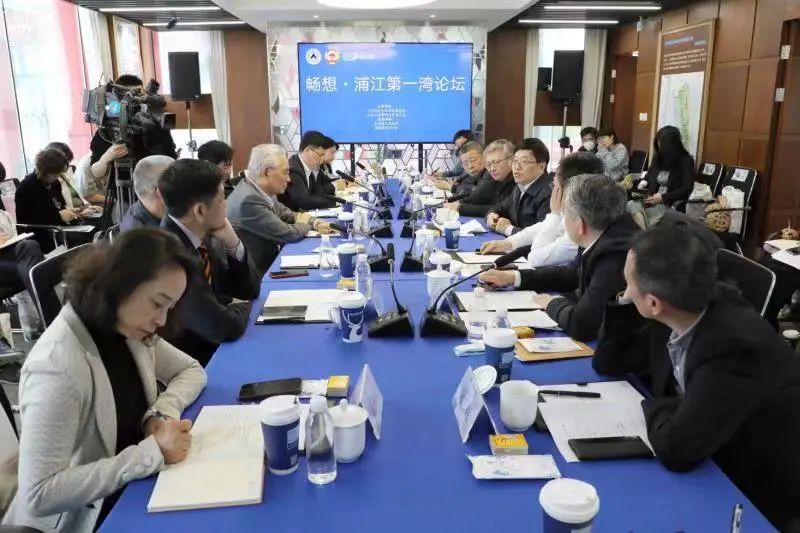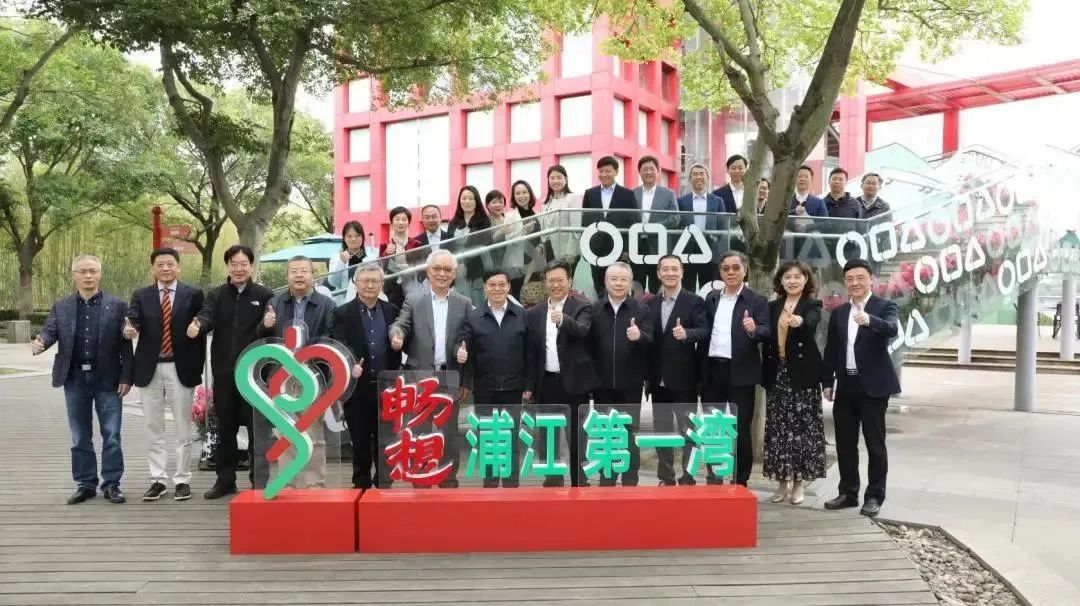“Vision: The Leading Bay of the Huangpu River” Forum Convened
May 11, the “Vision: The Leading Bay of the Huangpu River” forum was jointly convened by the Shanghai Federation of Social Science Associations and Shanghai’s Minhang District PPCC (People's Political Consultative Conference). Experts and scholars from the Shanghai Federation of Social Science Association, East China Normal University, Tongji University, and Shanghai Jiao Tong University attended and delivered speeches on how “the Leading Bay of the Huangpu River” might be developed and become one of the most attractive bay areas in the world, serving as a “gold business card” for the Minhang District’s high-quality development. For that vision, suggestions were made on how to exploit the locational advantage of the Bay and Minhang as Shanghai’s southern scientific and innovative center.

Wang Zhan, Chairman of the Shanghai Federation of Social Science Associations made a speech on “Adhering to the Comprehensive Development of Both Banks of the Huangpu River to Showcase the Full Charm of Minhang”, in which he explained from the perspectives of the skyline, landmarks, urban tone, architecture, urban sculpture, and culture, and elaborated on creating the most agreeable business environment in the Bay. He pointed out that Minhang should endeavor to become a district of creativity and innovation, and for such a purpose the district needs to define and display its rare and unique resources for the attention of more scientists and entrepreneurs.
Prof. Du Debin from East China Normal University (ECNU) gave a speech on “Cultivating an Engine and Strengthening Innovation: Thoughts on the Development of the Grand Neobay Innovative Cluster ”. He made a comparison between Shanghai and a few other important cities around the world in terms of investment in scientific research and development and proposed that Minhang should lay emphasis on “make up for its shortcomings” when constructing the “Grand Neobay”, where high-tech enterprises of global influence should be raised. Such businesses will prove to be engines to drive innovation forward most powerfully.
Prof. Chen Qiang from Tongji University made a speech entitled “The Construction of Shanghai Scientific and Innovative Center: From Hotbed to Highland”, in which summarized the common “ecological” characteristics of such a center: it is home to numerous high-level universities and research institutions, there functional platforms for scientific facilities are highly efficient, the social and cultural air for innovation and entrepreneurship are friendly and government’s institutional supply is robust and steady. He also put forward some policy suggestions specifically aimed at changing paradigms, improving the concentration of factors, planning ecological defenders, and establishing trigger mechanisms.
Prof. Hu Jie from Shanghai Jiao Tong University put forward some possible measures for construction of the Bay, focusing on planning and guidance. First and foremost is planning, and planning for land development and industrial development should be integrated. Such planning should make sure that the most agreeable environment for scientific and technological innovation is in place, a virtuous cycle should always be in motion, and the resources of higher education institutions must bring agglomeration effect.
Prof. Yu Nanping, also from ECNU, analyzed the current international situation based on the major changes in the international competition circumstances. He expressed his opinion on accurately grasping the window of opportunity to obtain the competitive initiative on the “new tracks” of the industry. As for elevating “Grand Neobay” to a world-class waterfront bay area, he urged that we should fully acknowledge our advantages and disadvantages in international competition, find new space for innovative development, and fulfill the potential of university federation in conducting “organized academic research”.


